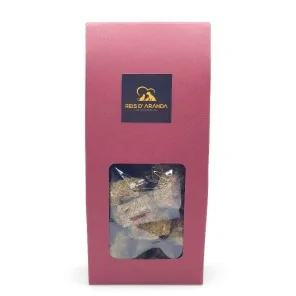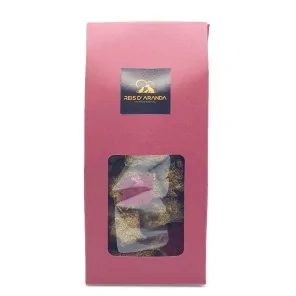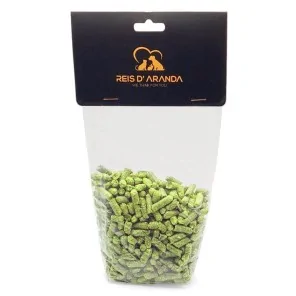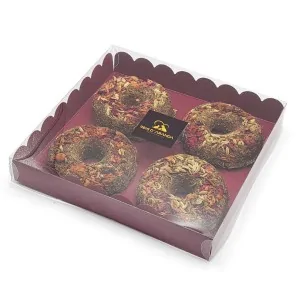Its name says it all: the Vienna blue rabbit comes from Austria. Not only is it beautiful with its shiny blue-grey...
Hay as the basis of guinea pig nutrition
Nutritional benefits of hay
Hay is the basis of the diet of many animals such as rabbits and guinea pigs, not only occupies 80% of their daily diet, but also prevents many associated diseases that, if developed, can be fatal, such as intestinal arrest, obesity, diarrhea or acquired malocclusion and / or dental overgrowth (both incisors and molars).
In the following article, we will discuss the importance of this food in the daily diet of our guinea pig.
Types of hay
Hay is the main food in a guinea pig's diet (it makes up 80% of its daily diet) and should be available at all times. It provides essential fiber to maintain dental health (preventing dental overgrowth and acquired malocclusion for this reason) and proper functioning of the digestive system.
Within the word "hay" we can find a great diversity of options, the most common being:
- Festuca
- Alfalfa
- Timothy
- Oats
- Mountain
Both fescue and Timothy are the best options to offer our rabbit throughout its life, while alfalfa (and its mixture with fescue known as "alfastuca") should only be offered to animals under 6 months of age and pregnant/lactating females due to its very high levels of calcium (which, in a wrong diet, can produce milky urine and renal problems).
Oat hay, on the other hand, is recommended only in times of molting due to its high sugar levels and great satiating power.
- -ALFALFA hay: This type of hay, rich in calcium and with a thick and crunchy texture, is recommended only in times of moulting due to its high sugar levels and great satiating power.
and crunchy texture, is very easy to break and it is quite common to lose the leaves if care is not taken
leaves if care is not taken in its handling. It has an intense green color and a rather
It has an intense green color and a quite penetrating aroma, being especially indicated for guinea pigs under six months old, remaining and lactating females, and animals with low calcium levels or special needs that require a supplement of this type of mineral.
It is not recommended for the rest of the animals unless it is as a
as a treat -providing them with a small hint once or twice a month-, since a diet rich in calcium when it is not
calcium-rich diet when it is not necessary, can cause milky urine and kidney problems.
milky urine and kidney problems. - -FESTUCA HAY: The most common of all, a hay of long and soft fibers, colored
of intermediate green color and soft and fresh odor. It is very rich
It is very rich in fiber and its percentage of calcium is moderate, making it the most
recommended next to "Timothy" for daily feeding, being suitable for all periods of life.
all periods of life. - -OATS HAY: It is harvested before the ear matures and is green and nutritious.
and is green and nutritious, its thick texture and extremely long fibers in some cases, makes it an excellent
its thick texture and extremely long fibers in some cases, makes it an excellent option for the moulting season.
supplement that should not be used as a base, since it is also a hay richer in sugars and
richer in sugars and much more satiating than "Timothy" or fescue, so it is an excellent
Fescue, so our rabbit will eat less hay as it will feel full sooner. - -TIMOTHY HAY: Thick, lanky and pale, it is the hay preferred by the great majority of owners and the best option next to fescue when feeding our guinea pig. Its price is higher, but it is an excellent option for those animals that require diets low in calcium or has. Tendency to the formation of urinary calculi or related problems.
related problems.
Hay as the basis of the diet
Many owners think that they can replace hay with hay pellets or green leafy vegetables (rich in fiber), but these two things are nothing more than supplements to the diet and should never replace the hay intake of our guinea pig.
How to introduce hay in the diet
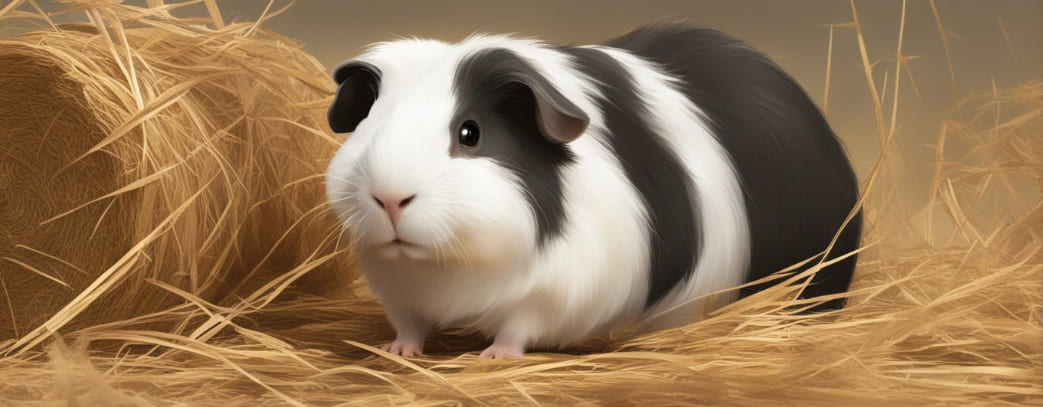
Whether guinea pigs or rabbits, hay is the first solid food that puppies eat. In the case of guinea pigs, they are born with their eyes and ears open, being almost "independent" of their parents (although, this evolution with respect to other small rodents such as rats or hamsters) does not mean that they can live without them before the correct weaning age. As a general rule, hay will not harm our guinea pig if it is introduced to a different brand or type of hay without a transition period (which must be done with feed, vegetables and fruits), being more likely that it will show indifference and not want to eat it than that it will upset its stomach.
Some hays, such as alfalfa hay, it is advisable to give it mixed with fescue or Timothy hay because it is much stronger, but this is the only exception.
Raising animals on hay
One of the defining traits of a good breeder or owner is the quality of the feed they give their animals. Someone committed to the lives he has in his hands will always look for the best hay he can buy (whether he has to tighten his belt or not), because he is aware that health is linked to food, and that he can save a lot of money on veterinary costs if he pays a little attention to this issue.
As we have said before, a guinea pig raised with quality hay and in abundance will be less likely to suffer from obesity, malocclusion acquired by lack of hay, gastrointestinal problems....
The hay should be offered freely, without restricting its consumption, having to be available for our guinea pig 24 hours a day.
Hay for specific animals
As we have mentioned before, each hay is specific for a moment or stage of life, if after reading this article you have doubts, consult your exotic veterinarian, especially if your pet has specific health problems such as diabetes, recurrent stones or osteoporosis.
Proper storage of hay
Hay is a delicate product, in the forage sheds it is always kept in the shade, away from direct sun (which ends up drying it excessively and giving it a yellowish color to end up turning it into straw), humidity (which can rot it and generate fungus in it) and strong or unpleasant odors.
At home, we must do the same, being advisable to take it out of the package and keep it in a thick cloth bag for clothes, and that is breathable.
Frequently asked questions about hay for pets
How much hay should I give my guinea pig daily?
Hay should be given in large quantities 24 hours a day, it should not be limited under any circumstances as our guinea pig eats several times a day.
Can I give hay to other animals such as tortoises or hamsters?
Hay is not suitable for all animals. Consult a veterinarian before including it in their diet.
In the case of hamsters, hay is mostly used as enrichment for their habitat, they may nibble on it but it is not part of their diet.
Is it safe to give hay to animals with food allergies?
Always consult your veterinarian if your pet has any type of hay allergy, it is not the most common and most conjunctivitis or sneezing to this product is usually more due to an excess of dust in the hay.
Can I collect hay naturally for my pets?
Yes, as long as we know for sure that the area where we collect it is clean of pesticides, and animals such as dogs or cats do not urinate or defecate in it.
What should I do if my pet rejects hay?
If our guinea pig is a sybarite with hay, we can try to mix it with the one he has always eaten and gradually introduce it, as well as not offering him feed during the couple of days that the transition usually lasts. Why? Because many guinea pigs are addicted to feed as it is so tasty and comfortable to eat, as soon as they see that they only have hay at their disposal, they start to eat it.
Conclusion
Hay is an essential component in the diet of many animals, providing unparalleled nutritional benefits. By making hay the foundation of your pets' diets, you are ensuring their long-term health and well-being. Be sure to choose the best hay and watch your pets thrive!
The best hay products
Get access to the best hay-based baked goods for your pets today at Reis d'Aranda.
Leave a comment
Log in to post comments


